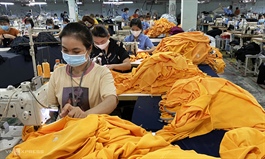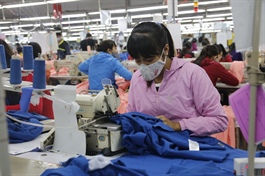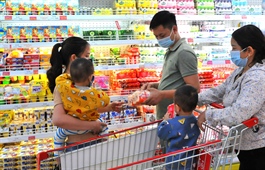Vietnamese agricultural products record impressive exports
Vietnamese agricultural products record impressive exports
Despite the impacts of Covid-19 on Vietnam’s trade, the Ministry of Industry and Trade (MoIT), the agricultural sector and related units have successfully implemented promotion for the export of Vietnamese agricultural products.
Sustaining growth
According to the General Statistics Office, in the first nine months of 2021, the export turnover of the agriculture sector reached US$35.5 billion, up 17.7 percent year on year. This reflects the increased export revenues of many products, such as coffee, rubber, vegetables, pepper, cashew nuts, livestock products, wood products, rattan, bamboo, sedge and mats.
The Vietnam Rubber Association said that the recent growth in rubber exports was due to increased imports from China, accounting for about 70 percent of Vietnam's total output.

Vietnamese pepper is expected to return to the group of exports valued at one billion US dollars or more |
As for the pepper sector, during the nine-month period, pepper exports reached US$719 million, up 47 percent in value despite a 3.2 percent decrease in output year on year due to higher export prices. According to the Chair of the Vietnam Pepper Association Nguyen Hai Nam, the high demand for pepper in recent months amidst a five percent drop in global pepper production compared to the previous season has driven up pepper prices. Major pepper consuming markets such as the US, India, and China have increased their imports significantly.
The Vietnam Fruit and Vegetable Association also aims to achieve US$3.5 billion export revenues this year. Secretary General of the association Dang Phuc Nguyen said that despite the Covid-19 pandemic, fruit and vegetable exports grew significantly thanks to increased exports to European markets, the US, Northeast Asia, Middle East and Australia. Previously, exports depended quite heavily on the Chinese market with the proportion accounting for about 70 percent, but that has now declined to 58 percent. The proportion of exports to other markets has increased from 30 to 42-50 percent and the quality of Vietnam's vegetables has been significantly improved to discerning market standards.
Regarding livestock products, the Department of Animal Health under the Ministry of Agriculture and Rural Development (MARD) also provided active support to increase milk and dairy product exports to China, as well as feathers, fish flour and fish oil, and bird's nest and processed chicken products to Russia. In addition, the department negotiated market openings for exports of animals and animal products to countries such as the US and China.

Vietnamese dragon fruit sold in Australia |
Solutions to sustain export growth
According to Nguyen Quoc Toan, Director of the Agro Processing and Market Development Authority under the MARD, relevant state agencies have been negotiating to open markets, remove technical barriers, and promote the export of agricultural, forestry and fishery products. They also coordinated with Vietnamese embassies and trade offices abroad to exchange and provide information on key export markets such as Japan, the Republic of Korea, the US, the EU and China for analysis, evaluation and forecast of market trends during and after the pandemic, thereby proposing prompt responsive solutions.
However, difficulties and challenges stemming from the pandemic are expected to remain and affect the production and export of agricultural products. Therefore, the agricultural sector has identified solutions that include market openings and applying good and safe agriculture practices. Along with technical solutions, the agricultural sector will also continue to advise farmers on GlobalGAP, VietGAP, ASC standards; disseminate regulations of agricultural trading so that localities, enterprises and farmers can respond promptly and help Vietnam's agricultural products maintain high export growth.
The MoIT will continue to negotiate the removal of trade and technical barriers to Vietnam's agricultural exports, expand agricultural exports to economies whose product structures supplement Vietnam’s, such as Japan, the Republic of Korea, India, the EU or the Middle East; select and export suitable products to potential markets such as Russia, the Middle East, Africa, and ASEAN.

























